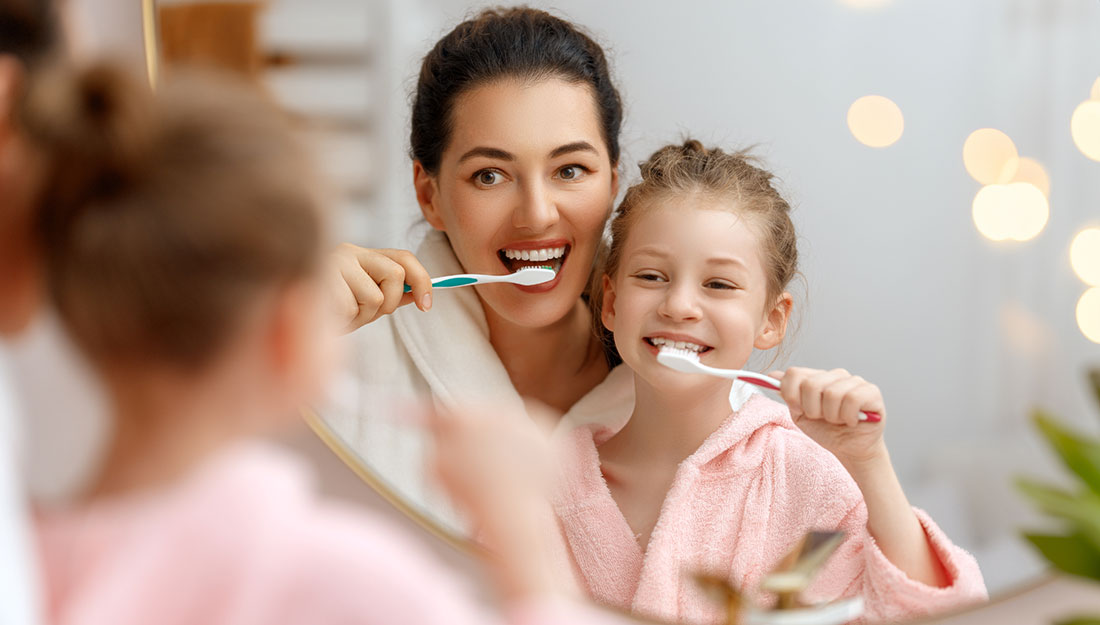Call 408-741-9224 • 19000 Cox Avenue, Suite A • Saratoga, CA 95070
You’re Brushing Your Teeth Wrong – 5 Mistakes That Can Lead to Damage, Decay, and Bad Breath

We brush our teeth every day, often twice a day, trusting that this simple routine is keeping our smiles healthy. However, did you know that the way you brush could actually be harming your oral health? It’s true. Many everyday brushing habits can unknowingly cause tooth damage, accelerate decay, and even result in persistent bad breath. Here are five common brushing mistakes—and tips to fix them—to ensure your brushing routine supports optimal oral health.
1. Using a Toothbrush That’s Too Hard
One of the most common mistakes is using a toothbrush with stiff bristles, thinking it’s more effective at removing plaque. In reality, hard-bristled toothbrushes can wear down enamel, irritate gums, and even cause receding gums.
The Fix: Opt for a toothbrush with soft or extra-soft bristles. Soft bristles clean effectively without harming enamel or gums. Additionally, replace your toothbrush every three to four months, or sooner if the bristles become frayed.
2. Brushing Too Aggressively
Scrubbing your teeth aggressively might seem like the best way to remove stubborn plaque or stains, but this habit can cause significant damage. Aggressive brushing can erode tooth enamel, expose sensitive dentin, and lead to gum recession, increasing your risk of cavities and gum disease.
The Fix: Use gentle, circular motions to brush each tooth surface thoroughly yet softly. Take your time and spend about two minutes per brushing session—approximately 30 seconds per quadrant of your mouth. If you find yourself pressing too hard, consider holding your toothbrush with only a few fingers rather than a firm grip.
3. Not Brushing Long Enough
Many of us rush through brushing our teeth, dedicating less than the recommended two minutes per session. Quick brushing is insufficient for effectively removing plaque and bacteria, increasing the likelihood of tooth decay and gum disease.
The Fix: Set a timer or use an electric toothbrush with a built-in timer to ensure you’re brushing for the full two minutes. Divide your mouth into four sections (upper right, upper left, lower right, lower left) and spend equal time carefully cleaning each area.
4. Ignoring Your Tongue and Gumline
Plaque and bacteria don’t just live on your teeth—they also accumulate on your tongue and along the gumline. Neglecting these areas can lead to persistent bad breath, gum inflammation, and ultimately periodontal disease.
The Fix: After brushing your teeth, gently brush your tongue or use a dedicated tongue scraper to remove bacteria and food particles. Don’t forget your gumline; angle your toothbrush at a 45-degree angle and gently brush where your teeth meet your gums. This helps dislodge trapped plaque and prevent gum inflammation.
5. Brushing Immediately After Eating
Contrary to popular belief, brushing immediately after meals—especially after consuming acidic foods or beverages—can cause more harm than good. Acidic foods temporarily soften your enamel, and brushing too soon afterward can wear down this protective layer.
The Fix: Wait at least 30 minutes after eating or drinking acidic substances, such as citrus fruits, sodas, coffee, or wine, before brushing. This waiting period allows saliva to naturally neutralize acids and remineralize your enamel, protecting your teeth from erosion.
Bonus Tip: Don’t Forget Flossing and Rinsing
While brushing correctly is crucial, it’s just one part of a comprehensive oral hygiene routine. Daily flossing helps remove plaque and food particles stuck between your teeth, areas your toothbrush can’t effectively reach. Additionally, rinsing with an antibacterial mouthwash can help reduce bacteria and freshen your breath, thereby further improving your oral health.
Final Thoughts
Proper brushing technique is crucial for maintaining a healthy smile and preventing dental issues such as tooth decay, gum disease, and bad breath. Avoid these five common mistakes by choosing the right toothbrush, brushing gently and thoroughly, spending adequate time brushing, addressing your tongue and gumline, and timing your brushing correctly after meals. Combine these practices with regular flossing and mouth rinsing, and you’ll ensure your oral health stays in optimal condition for years to come.
Remember, regular visits to your dentist and professional cleanings every six months are essential for detecting potential issues early and maintaining optimal oral hygiene. By adopting better brushing habits today, you’re investing in a brighter, healthier smile for tomorrow.
